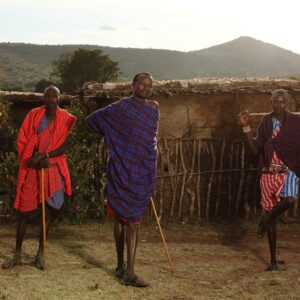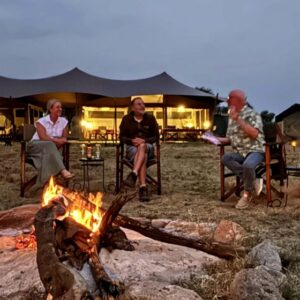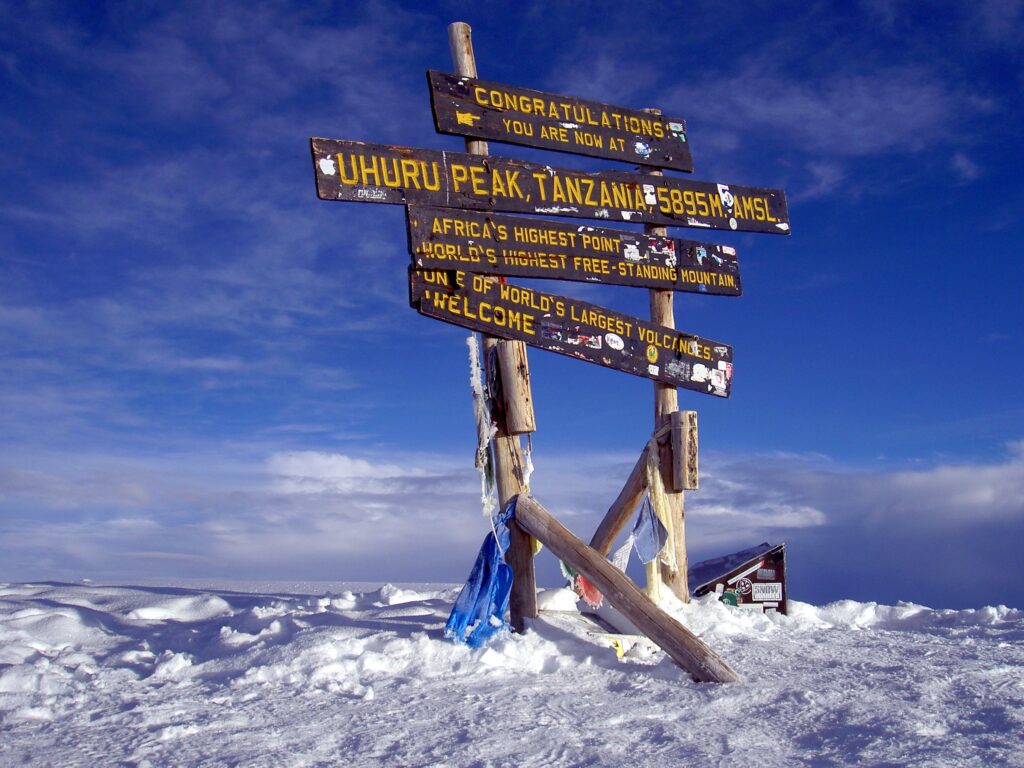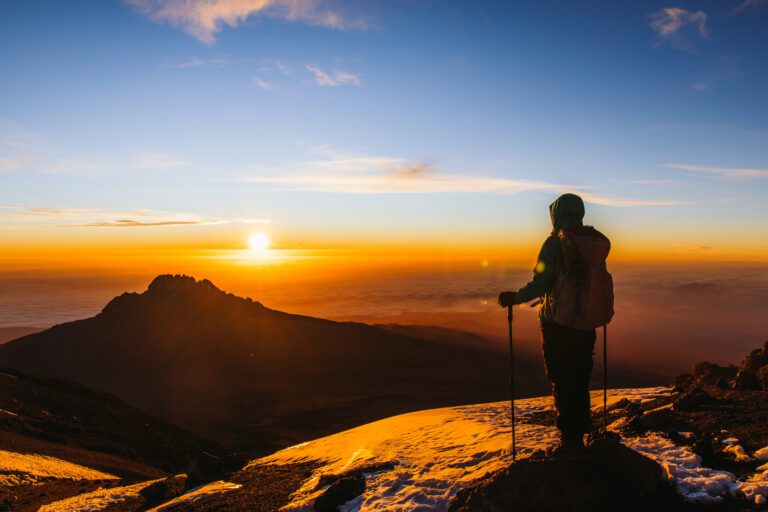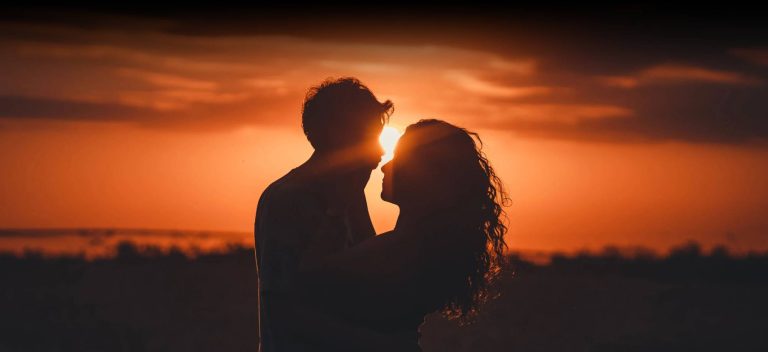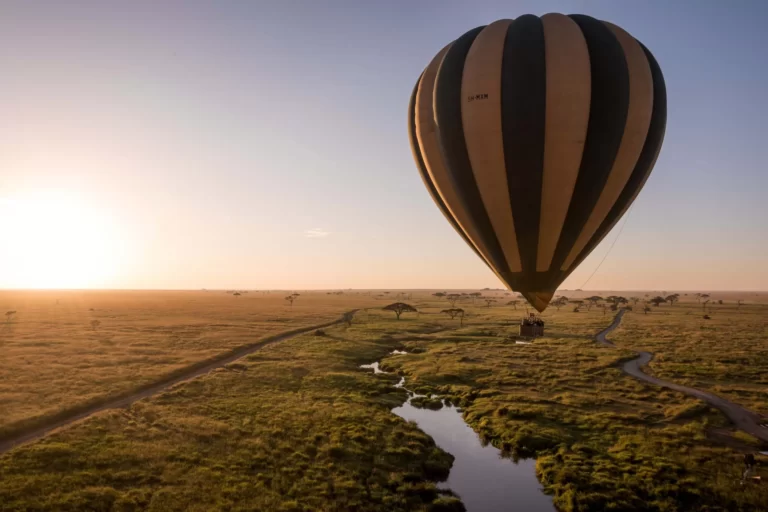Amazing 10 things to know about climbing mount Kilimanjaro.
To climb Mount Kilimanjaro, choose the best route for your experience, train by hiking and strength training, and pack appropriate gear, especially warm clothing, for extreme weather and altitude changes. You must have a guide and adequate travel insurance. Be prepared for potential altitude sickness by acclimatizing, going slowly (“pole pole”), and drinking plenty of water. Budget for tipping your guides and crew, as they provide essential services.
Climbing Mount Kilimanjaro, the “Roof of Africa,” is one of the most thrilling adventures you can embark on. Rising 5,895 meters (19,341 feet) above sea level, Kilimanjaro isn’t just Africa’s tallest peak—it’s also one of the few high mountains in the world you can summit without technical climbing skills. But while it’s accessible, it’s far from easy. To make your trek both successful and enjoyable, there are key things every climber should know before taking on this life-changing challenge. Here are 10 things to know about climbing Mount Kilimanjaro.
1. Choose the Right Route
Your Kilimanjaro journey begins long before you set foot on the mountain—it starts with choosing the right route. Kilimanjaro offers several trekking routes, each with its own character. The Marangu Route is nicknamed the “Coca-Cola Route” for being the most straightforward and hut-based. The Machame Route is popular for its varied scenery and “climb high, sleep low” acclimatization profile. For fewer crowds and a longer, more gradual climb, the Lemosho Route is highly recommended. Meanwhile, the Rongai Route approaches from the north and is often drier, while the Northern Circuit is the longest, offering excellent acclimatization.
The route you choose influences not only your chances of success but also the type of experience you’ll have. Take into account your fitness level, budget, and the number of days you can commit.
2. Physical and Mental Training
While Kilimanjaro isn’t a technical climb, it demands endurance. You’ll be trekking for five to nine days, often for six to eight hours a day, with the summit night stretching into a grueling 12- to 14-hour push. Preparing your body is essential. Regular hikes, cardio workouts, and strength training will build the stamina you need. But don’t overlook mental preparation. There will be moments when exhaustion and thin air test your willpower. Staying positive, focusing on the goal, and preparing for the mental challenge is just as important as being physically fit. Think of Kilimanjaro as a test of both body and spirit.
Mount Kilimanjaro hiking tours Tips: To effectively prepare for climbing Kilimanjaro, prioritize long, slow uphill hikes with a loaded backpack to build endurance and stamina for the mountain. Supplement this with strength training for your legs and core, plus regular cardiovascular exercises like cycling or running. Additionally, choose a longer route ( Machame, Lemosho and Northern Circuit routes) for better acclimatization, break in your hiking boots, consider altitude medication, and pack appropriate layering clothing.
3. Pack Essential Gear
The ultimate Kilimanjaro packing list right gear can make the difference between a miserable trek and a comfortable one. Kilimanjaro takes you through five distinct climate zones, from tropical rainforest to arctic summit, so layering is key. Pack moisture-wicking base layers, insulating mid-layers, and a waterproof outer shell. Don’t forget sturdy hiking boots, warm gloves, and a good sleeping bag rated for sub-zero temperatures. Other essentials include a headlamp for summit night, trekking poles, high-SPF sunscreen, and a refillable water bottle or hydration bladder. A duffel bag for porters to carry and a small daypack for yourself are standard. Packing smart keeps you safe, warm, and ready for the climb.
What do I need to climb Kilimanjaro?
To climb Kilimanjaro, you need specialized gear, including waterproof hiking boots, a layering system of clothing, a 4-season sleeping bag, trekking poles, a sleeping mat, a duffel bag for your porters, a daypack, a headlamp, and water bottles or a hydration pack. You also need essential personal items like sunscreen, a hat, gloves, and toiletries, as well as medications and water purification tools. Hiring a Kilimanjaro experience local tour operator or guide is highly recommended, as they can provide important equipment like tents and tables and help navigate the challenging terrain and altitude.
4. Go “Pole Pole”
On Kilimanjaro, you’ll hear guides and porters say “Pole Pole” (pronounced poh-lay poh-lay), Swahili for “slowly, slowly.” It’s not just advice—it’s survival. Walking slowly helps your body acclimatize to the altitude and conserves energy for the long journey ahead. Many first-time climbers try to push too fast early on, only to struggle later when the air thins. Moving at a steady, deliberate pace increases your chances of reaching Uhuru Peak, the summit of Kilimanjaro. Embrace the rhythm of the mountain and remember: it’s not a race.
Note: Before climbing Kilimanjaro, climbers wish they had better understood the importance of slower acclimatization for altitude sickness, the critical need for adequate hydration and layering for extreme cold, the mental toughness required for the summit, and the importance of choosing a reputable operator and a longer route to increase success rates.
5. Stay Hydrated and Eat Well
At altitude, your body loses fluids faster, and dehydration can worsen the effects of altitude sickness. Aim to drink three to four liters of water daily. Tour operators usually provide boiled and treated water for refilling bottles. Carry hydration packs or bottles and sip frequently rather than gulping. Food is equally vital. Most operators provide hearty meals—soups, rice, pasta, vegetables, and even fruits. Eat even if you don’t feel hungry, as your body needs the calories for energy and warmth. Snacks like energy bars, nuts, or chocolate can provide quick boosts along the trail.
6. Be Aware of Altitude Sickness
Altitude sickness is one of the greatest challenges on Kilimanjaro. Symptoms include headaches, nausea, dizziness, and shortness of breath. The golden rule is to listen to your body and never ignore severe signs. If symptoms worsen, descending is the only cure. Most routes allow for gradual acclimatization, and your guide will monitor your health daily. Diamox (acetazolamide) is sometimes prescribed to help prevent altitude sickness, but it should be taken with medical guidance. Remember, reaching the summit is optional—coming back safely is not.
7. Hire a Guide and Tour Operator
Climbing Kilimanjaro without a licensed guide isn’t allowed. Choosing a reputable tour operator is one of the most important decisions you’ll make. Good operators provide trained guides, porters, quality equipment, and safety protocols like daily health checks and oxygen supply. A reliable team not only increases your chances of success but also ensures your safety. They manage logistics, set up camps, prepare meals, and encourage you when the climb feels overwhelming. Kilimanjaro is a team effort—you may take the steps, but they’ll guide your way.
Kilimanjaro tips and tricks: To climb Kilimanjaro successfully, prioritize training by hiking with a weighted pack, break in your boots, pack high-quality, layered gear for varying temperatures, and drink ample water while taking it “pole pole” (slowly) to acclimatize and prevent altitude sickness. Other crucial tips include choosing a reputable tour operator and route, protecting yourself from the intense sun, eating well, being mentally prepared for the demanding summit push, and tipping your mountain crew generously.
8. Get Travel Insurance
Unexpected situations—altitude sickness, injuries, or emergencies—can happen on Kilimanjaro. Travel insurance that covers high-altitude trekking is essential. Standard insurance policies often exclude climbs above certain elevations, so make sure yours includes coverage up to at least 6,000 meters. Good insurance should also cover medical evacuation, as the nearest major hospitals are in Moshi or Arusha, far from the mountain. It’s one expense you hope not to use but will be grateful for if needed.
9. Tipping is Customary
Kilimanjaro climbs wouldn’t be possible without the hard work of guides, cooks, and porters who carry gear, set up camp, and ensure your comfort. Tipping is a customary way to show appreciation. The amount depends on the size of your group and the length of the climb, but most operators provide guidelines. Tips are usually pooled and distributed at the end of the trek during a short ceremony. Be prepared with cash in small denominations, preferably in U.S. dollars or Tanzanian shillings. It’s a gesture that acknowledges the dedication of the crew who make your journey possible.
10. Respect the Environment
Kilimanjaro is a UNESCO World Heritage site and a natural wonder. Protecting its fragile ecosystems is everyone’s responsibility. Follow the “leave no trace” principle: pack out your trash, use designated toilet facilities, and avoid disturbing wildlife. Porters often carry waste down, but be mindful of minimizing what you bring. Stay on marked trails to reduce erosion and respect park rules. The beauty of Kilimanjaro lies not only in its summit but in its pristine environment—let’s keep it that way for future generations.
10 Essential Things To Consider Before Climbing Mount Kilimanjaro
Before climbing Mount Kilimanjaro, essential considerations include selecting a reputable tour operator and route, training well in advance, packing appropriate gear like warm, waterproof layers and sturdy boots, preparing for altitude sickness by acclimatizing and staying hydrated, and having valid travel insurance. You also need to understand the physical and mental demands of the trek, including the difficulty of summit day and the importance of maintaining a slow pace, known as “pole pole”.
- Fitness: It’s a trek, not a walk. Train hard for months!
- Route: Choose wisely based on experience, budget, and desired pace.
- Acclimatization: Give your body time to adjust to altitude sickness risk.
- Gear: Invest in proper clothing, footwear, and essentials for changing weather.
- Culture: Respect local customs and traditions, learn some Swahili phrases.
- Pack Light: Every gram counts! Prioritize essentials and ditch the extras.
- Hydration: Drink regularly, even if not thirsty. Dehydration is serious at altitude.
- Pack for All: Expect sun, rain, wind, and even snow depending on season and altitude.
- Leave No Trace: Respect the mountain and minimize your environmental impact.
- Enjoy the Journey: Embrace the challenge, connect with nature, and savor the experience.
Final Thoughts
Climbing Mount Kilimanjaro is more than a physical challenge—it’s an emotional and spiritual journey. From the lush rainforest at its base to the icy glaciers at its peak, every step tells a story. Success lies in preparation: choosing the right route, training your body and mind, respecting the mountain, and embracing the guidance of those who know it best.
When you finally stand at Uhuru Peak, watching the sun rise over Africa from the highest point on the continent, every step, every breath, every “Pole Pole” moment will feel worth it. Kilimanjaro isn’t just about reaching the summit—it’s about the journey that transforms you along the way.
10 Tips For A Successful Climb On Mount Kilimanjaro
Do I Need Trekking Poles to Climb Kilimanjaro?
How To Prepare For Climbing Mount Kilimanjaro
How easy is it to Climb Mount Kilimanjaro?
10 Important Things to Know Before Climbing Kilimanjaro
Remember, knowledge empowers and prepares you for success. Things to know about climbing mount Kilimanjaro. With these insights, you’re well on your way to conquering the mighty Kilimanjaro and experiencing the thrill of reaching the “Roof of Africa.”


